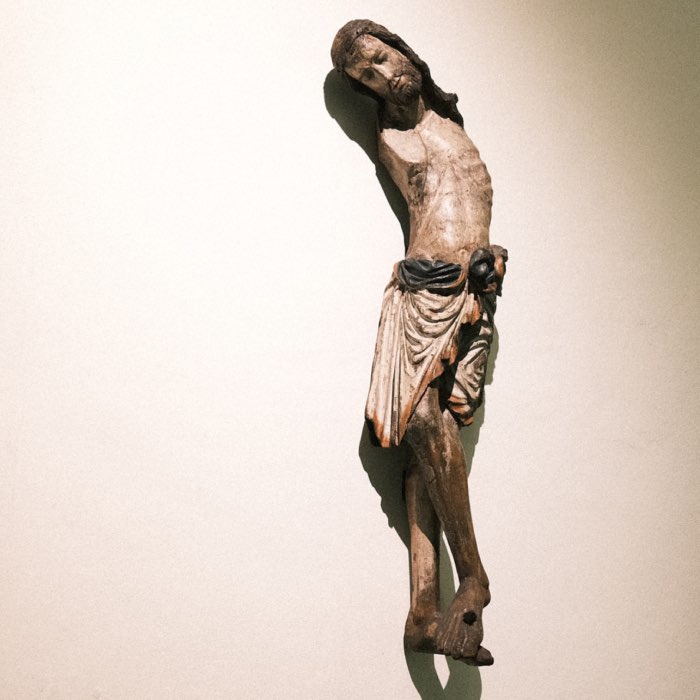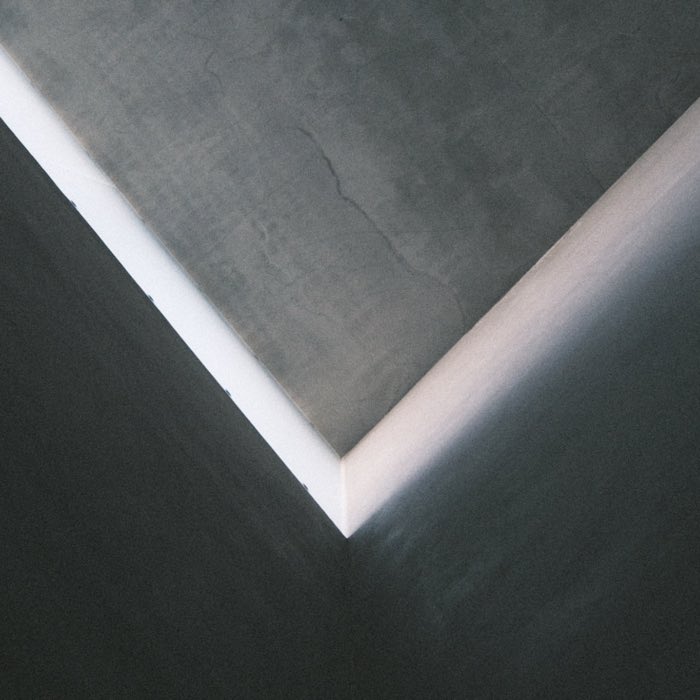Cologne, the ‘Hillige Stadt’
Cologne’s historical role as a religious hub in central Europe and the Holy Roman Empire is epitomized by its twelve Romanesque churches, each a witnessing the city’s spiritual, architectural, and cultural legacy over the centuries. Situated north of the Alps, Cologne emerged as a key center of Christianity, home to a network of churches that fostered a spiritual life for its medieval inhabitants and served as significant pilgrimage sites. The city’s status as the Hillige Stadt or ‘Holy City’ was not merely due to the grandeur of its churches but also tied to its vast collection of sacred relics, which placed it on par with other major pilgrimage centers like Rome and Jerusalem. This profound religious influence continues to shape Cologne’s identity today, albeit in ways that transcend the strictly Catholic framework of the past.
 A bird’s eye view of medieval Cologne. Woodcut by Anton Woensam from Worms, 1531, detail. The original is 352 cm wide. Among other things, you can see (from the right) the town hall tower and Groß St. Martin, St. Cecilia, and the Gürtzenich. Exhibited in the Schnütgen Museum.
A bird’s eye view of medieval Cologne. Woodcut by Anton Woensam from Worms, 1531, detail. The original is 352 cm wide. Among other things, you can see (from the right) the town hall tower and Groß St. Martin, St. Cecilia, and the Gürtzenich. Exhibited in the Schnütgen Museum.
Cologne’s role as a Religious Hub in Central Europe
Cologne’s rise to religious prominence is inseparable from its position as an imperial city within the Holy Roman Empire and a major ecclesiastical center. Its archbishop held not only religious but significant political power, acting as one of the seven prince-electors responsible for choosing the German emperor. The city’s religious importance was further cemented through its association with a thriving trade in relics, which attracted pilgrims from across Europe. The acquisition of relics, including the Three Magi, which were transferred to Cologne Cathedral in 1164, turned the city into a focal point for Christian worship. These relics were housed in the city’s many churches, and each had its own spiritual significance. This relic trade not only brought spiritual prestige but also economic prosperity, as Cologne became a vital stop on pilgrimage routes.
Cologne’s Romanesque churches, namely
- St. Gereon (4th century),
- St. Severin (4th century),
- St. Ursula (4th century),
- St. Kunibert (7th century),
- St. Maria im Kapitol (8th century),
- St. Cecilia (9th century; today, the church is home of the Schnütgen Museum),
- St. Maria Lyskirchen (10th century)
- St. Pantaleon (10th century),
- St. Andreas (10th century),
- Groß St. Martin (10th century),
- St. George (11th century), and
- St. Aposteln (11th century),
were integral to this religious landscape (dates in parentheses indicate the foundation of the original churches). Built during the 11th to 13th centuries (with some earlier foundations), these churches represented the height of medieval Romanesque architecture and were designed to both serve the religious needs of the city’s inhabitants and accommodate the constant flow of pilgrims. Their grand design, including vast naves, towering spires, and complex apsidal structures, spoke to the city’s ambition to embody a heavenly Jerusalem on earth. Each church had its own set of relics, further encouraging pilgrims to visit multiple sacred sites within the city.
 Location plan of the 12 Romanesque churches marked on a map of Cologne from 1571. Source: Wikimedia Commonsꜛ (license: CC BY-SA 4.0)
Location plan of the 12 Romanesque churches marked on a map of Cologne from 1571. Source: Wikimedia Commonsꜛ (license: CC BY-SA 4.0)
In a later process, the list of churches to be considered and supported as a Romanesque church was extended to include the small former Romanesque village churches outside the medieval city walls, which have long since become part of Cologne’s urban area:
- Deutz, Alt St. Heribert Abbey
- Dünnwald, St. Nikolaus
- Esch, St. Martinus
- Heumar, Old St. Cornelius (Old Tower)
- Lindenthal, Krieler Dömchen St. Stephanus
- Lövenich, St. Severin
- Merkenich, St. Brictius
- Niederzündorf, St. Michael
- Niehl, Old St. Katharina
- Oberzündorf, St. Martin
- Rheinkassel, St. Amandus
- Rodenkirchen, Old St. Maternus (chapel)
- Westhoven, St. Nicholas Chapel
In 2005, four smaller former parish churches in Cologne’s old town were included in the funding program. Two of these churches are only partially preserved and have been integrated into newer buildings:
- St. Johann Baptist
- St. Peter, church tower, 11th century
- Old St. Alban, integrated into the Gürzenich
- St. Kolumba, integrated into the Kolumba Museum
Also included were:
- Old St. Mauritius (Cologne-Buchheim), apse around 1200
- St. Hubertus (Flittard), church tower, 12th century
Relics and the making of the Hillige Stadt
The importance of relics to Cologne (4th century) cannot be overstated. During the Middle Ages, relics were considered divine objects that connected believers to saints and martyrs, believed to intercede on behalf of the living. Cologne, with its vast collection, became a magnet for those seeking spiritual healing, redemption, or favor. Relics of saints like St. Ursula and her 11,000 virgins, housed in St. Ursula’s Church, or the bones of the Three Magi in the Cathedral, turned the city into one of Europe’s most important pilgrimage destinations. Pilgrims traveling to Santiago de Compostela or Rome frequently passed through Cologne, drawn by the promise of witnessing these holy artifacts. The city’s reputation grew, earning it the title Sancta Colonia – the Holy City, or the Hillige Stadt in the local dialect.
The Twelve Romanesque churches were key points in this sacred landscape. For the people of Cologne, these churches provided not only places of worship but also spaces where they could feel close to the divine. Daily life in medieval Cologne was marked by religious observance, and the churches formed the backbone of community life. They were where people prayed, received sacraments, and sought guidance from God and the saints. For pilgrims, these churches were spiritual waypoints where they could rest, reflect, and connect with the sacred relics. The architecture of the churches often reflected this dual function: built with large interiors to accommodate both the city’s population and the constant influx of pilgrims, they were simultaneously centers of community and devotion.
The twelve Romanesque churches and Cologne’s identity today
While the religious fervor that once defined Cologne has evolved, the twelve Romanesque churches remain crucial to the city’s identity. Today, they serve not only as architectural landmarks but as symbols of the city’s rich cultural and historical heritage. The role of these churches has shifted from exclusively religious to more inclusive cultural symbols that reflect Cologne’s long-standing connection to both the Christian world and its secular identity.
In modern times, Cologne is known for its cosmopolitan nature and cultural diversity. Though the Catholic Church still plays a significant role, the city’s identity is no longer dominated by religion. The Romanesque churches, once bustling centers of medieval Christian life, now coexist with modern cultural institutions and landmarks that emphasize Cologne’s openness to the world. The churches are cherished as historical monuments, drawing tourists and locals alike who seek to appreciate their architectural beauty, historical significance, and the serenity they offer amid the busy urban landscape.
In this way, Cologne’s Romanesque churches are a reminder of the city’s transformation. They reflect a past deeply entwined with Christian pilgrimage and relic worship, while today they serve a broader public purpose. The “Hillige Stadt” moniker persists, but it now encompasses more than just the religious. It speaks to a city that values its medieval roots while embracing modernity, where sacred and secular harmonize in the form of art, architecture, and cultural memory.
Conclusion
The twelve Romanesque churches of Cologne stand as lasting monuments to the city’s medieval glory and its former role as a religious hub in central Europe. These churches, combined with the city’s unparalleled collection of relics and sacred art, established Cologne as a major pilgrimage site, earning it the title “Holy City”. They provided not only spiritual solace to its inhabitants but also marked Cologne’s place in the broader Christian world. Today, while the city’s identity has moved beyond its strictly religious past, the churches continue to embody Cologne’s rich history and cultural resilience, serving as bridges between its sacred past and its mundane present.
Since the churches are relatively close to each other, a visit to all twelve can be done in one or two days, while offering a rewarding experience and a glimpse into Cologne’s spiritual and architectural heritage. Each church has its own unique character and history, reflecting the diverse influences that shaped the city over the centuries. Whether you are drawn to the grandeur of Cologne Cathedral or Groß. St Martin, the intimacy of St. Maria Lyskirchen, or the historical significance of St. Aposteln, the Romanesque churches of Cologne offer a unique journey through time and faith that is both enlightening and enriching.
References and further reading
- Jürgen Kaiser, Florian Monheim, Die großen romanischen Kirchen in Köln, 2017, Greven Verlag, ISBN: 9783774306875
- Ulrich Krings, Otmar Schwab, Köln, die romanischen Kirchen - Zerstörung und Wiederherstellung, 2007, Bachem, ISBN: 9783761619643
- Hiltrud Kier, Die Romanischen Kirchen in Köln, 2014, Hrsg.: Förderverein Romanische Kirchen Köln e. V. 2. Auflage, ISBN: 978-3-7616-2842-3
- Wikipedia article on the Fördervenein Romanische Kirchen Kölnꜛ
- Website of the Förderverein Romanische Kirchen Kölnꜛ


















comments